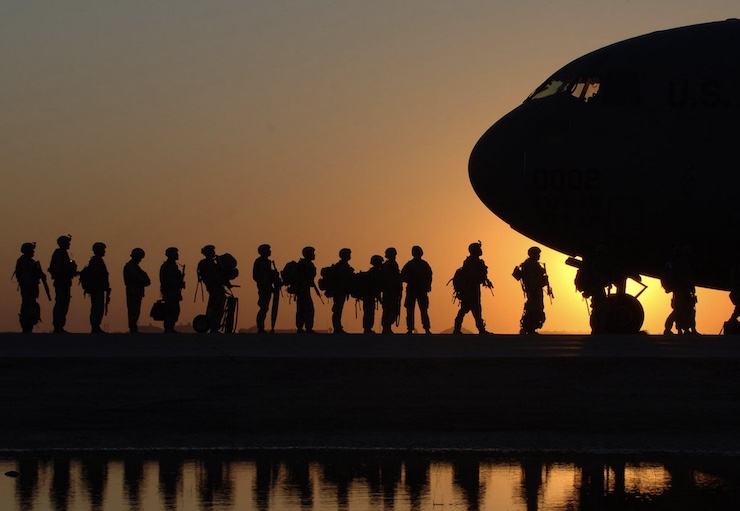
Throughout human history, there has always been different reasons why opposing forces enter states of war. The reasons behind why wars and conflicts begin are never simple. And of course, there are different levels of war activity. A Hot War is one in which battles with weapons take place like World War I & II or the Iraqi War. In a Cold War, like the one between the United States and Russia from 1947 to 1991, there are no physical battles. It describes the political tension between opposing forces. And then there is gray zone warfare where the conflicts are somewhat ambiguous as to whether military involvement is called for.
In gray zone warfare, conflict could come from cyber threats to land disputes or political disagreement. In such situations, the United States military is put in a tight spot as to how to intervene. There is a fine line between choosing sides and lending a hand versus getting involved in a possible battle. A recent example of gray zone war is when rioters attacked the Capitol Building on January 6, 2021, in protest of Congress’s counting of electoral votes. Besides police forces being overrun, the military was put in a position as to whether it was ethical to mount an attack on those who had stormed the Capitol. It is because of gray zone situations like this, that the United States military has been looking for new technological advancements in non-lethal weaponry.
For decades the United States military forces have used drones as tactical war tools. These drones, like the MQ-9 Reaper (also known as the Predator drone), are hunter-killer drones that can stealthily enter enemy airspace to launch attacks. Each Reaper costs approximately $64 million, a bargain compared to a manned fighter jet like the F-35 that costs around $95 million and means putting human life at risk in a battle. The joint US military forces have invested billions in all kinds of other drones for surveillance and parcel delivery too. Shortly after the attack on the Capitol, the Navy Marine Corps Systems Command published an exploratory paper about researching options for using drones as non-lethal weapons in gray zone conflicts.
Titled “Non-Lethal Payloads for Long-range Intermediate Force Capabilities on Small Tactical Vehicles and Unmanned Systems”, the paper outlines how the military is seeking ways to use aerial and ground drones to diffuse volatile situations without inflicting any permanent damage or lethal force. The paper suggests equipping drones with lasers that could temporarily blind people, acoustic devices to cause temporary deafness, microwave beams that could induce paralysis, stun guns, and even stink bombs. All of these weapons are in no way pleasant, but in the long run, they pose no damage while having the ability to neutralize possibly violent scenarios.
Imagine if drones with non-lethal weapons were available on January 6, 2021. Would the Capitol storming have reached the level of mayhem that it did? Without posing any risks to military or police members, the drones could have been sent in to quell protestors. True, some innocent bystanders, like those from the media, may have been caught in the crosshairs, but the riot would have been stopped. Any injuries inflicted would have been minor and temporary. The drones would have only incapacitated the crowd for the immediate time. The needless death of 5 people and the long lasting injuries to hundreds on January 6th would have been avoided. A riot that went on for hours could have been ended in a fraction of the time if non-lethal drones were available.
In May of 2019, Russia’s Scientific and Production Association of Special Materials Corporation presented their version of a non-lethal drone weapon at the Third Scientific and Technical Forum. The Russian drone could be equipped with a remotely operated stun gun or laser gun. In response to Russia’s non-lethal drone, Samuel Bendett, an adviser at the Center for Naval Analyses, said “This drone is definitely intended for internal security where killing the perpetrator is not recommended or is not the final outcome.” It makes sense that the United States would also be interested in such technology. The United States is looking to develop a non-lethal drone that is less than 3 cubic ft and weighs under 100lbs to make it easily transportable and deployable. Gray zone conflicts have become more common in recent history. With a non-lethal drone, the United States would have a tool to settle some conflicts more safely.
|